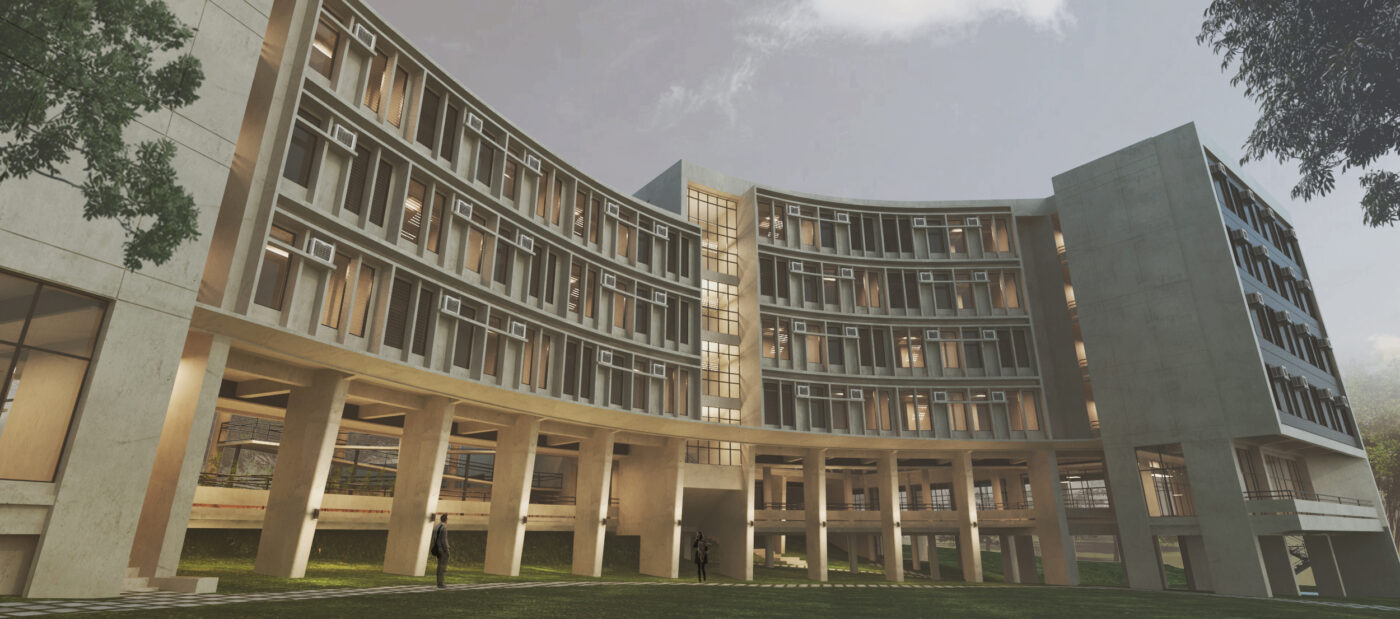THE ATENEO Office of International Relations (OIR) envisions to “internationalize the learning experience” and foster diversity in campus with its comprehensive internationalization program for the Loyola Schools through the building of the International Residence Hall, and the improvement of partnerships with universities abroad.
“It’s really to capacitate the university to become a global university, that is one that can attend to global concerns,” said Vice President for University and Global Relations Jose M. Cruz, SJ.
Diversity on campus
Cruz said that despite its name, the International Residence Hall is a facility for both international and local students. It aims to give local students “the same experience” of internationalization as the students who spend a term in universities abroad.
According to Cruz, the OIR aims to accommodate 60% international students and 40% local students in the dormitory. With a total of 155 bedrooms with their own restrooms and air conditioning units, the residence hall will house two students in a room and accommodate a total of 310 local and international students.
Although there are no dates yet, interviews for interested students will be conducted in order to assess their suitability for the new dormitory which will be completed in February 2018.
“We don’t have qualifying indices [for applicants] yet, but of course we would be happy to bring in students that understand the purpose of internationalization,” Cruz said.
Environmental sustainability guidelines will also be observed in the International Residence Hall, which include dual piping, environmentally friendly paints, LED lights, and inverter technology for air conditioning units.
Additionally, provisions for persons with disabilities will also be available in the dormitory, such as wider doors, bathrooms with handlebars, and ramps. This is an effort done in collaboration with the Institute on Disability and Public Policy through the Political Science Department.
Cruz also mentioned that the infrastructure is a response to the lack of dormitory rooms on campus. The OIR wanted to replicate the conditions found in dormitories and condominiums outside campus and in university dormitories abroad to “draw that population into the campus.”
Wella Lobaton, an interdisciplinary studies junior who has stayed in dormitories inside campus, thought that the International Residence Hall was “a big upgrade” from the existing dormitories with regard to facilities.
“I know a lot of people who moved out of Eliazo or [the University Dormitory] after a while because they weren’t completely comfortable without air conditioning or their own bathrooms. I think it would attract a lot of students who dorm outside campus because they [would] want the amenities that the existing dorms do not have,” she said.
Meanwhile, communication junior Patricia Ramos, who has lived in SMDC Blue Residences throughout her college life, never considered living in one of the existing dormitories on campus because she had concerns on freedom, privacy, and “how well-maintained the facilities would be.” However, her views on the new dormitory are positive.
“I think the International Residence Hall is a great initiative, especially since so many students struggle to find decent [condominiums] at a good price. Maybe if it had been built before freshman year, I would’ve considered staying there instead,” she added.
Although Romain Legros, an exchange student from Sciences Po Lille in France, found the Ateneo campus “very impressive and friendly for foreigners,” he doesn’t plan on applying for a slot in the International Residence Hall.
“Having a slot in the dormitory won’t interest me [because] even if I think that environmentally sustainable facilities are [excellent], I like to live in a different place than the one [where] I study,” he said.
Nonetheless, Legros hoped to make the best out of his one-year stay in the Ateneo. “I expect from the Ateneo community to be able to help me in case of need and to give [me] good tips for classes or travels,” he added.
Partnerships and projects
Apart from the International Residence Hall, the OIR is planning to elevate the educational experiences the university can offer through partnerships with international universities and projects inside campus.
While the Loyola Schools currently has 226 international partners across the globe, Cruz said that his office plans to focus on “not so much the quantity of partnerships, but the quality of the engagements.”
Currently, his office is working on formulating dual degree programs with Queen Mary University of London, which include a Master of Science (MSc) in Digital Innovation, and an MSc in Data Analytics.
As for the projects on campus, Cruz mentioned that the university recently put up a global classroom in PLDT-CTC 101, where students are seated in seven pods that have their own terminals and connections to the internet instead of desks and chairs. The design includes two large projectors which are used to “maximize the interaction” between both international and local students and teachers by sharing classes in real-time.
“It’s collaborative, [and] while the class is going on, you can actually link yourself out to other resources, to challenge the teacher, or challenge each other,” he said.
Due to the university’s limited budget, only two global classrooms are set for completion. The classroom in PLDT-CTC 101 is “already running,” and an additional classroom will be built in the Areté once it has been completed in September.
“If you were to ask us here, every classroom has to be like that, but it’s a different way of understanding. We understand students not only to be receptacles of knowledge, not even people who engage in the transfer of knowledge, but students as creators of knowledge,” Cruz explained.
“The pedagogy is you challenge young people to create the world. It really comes to creativity–Filipinos are top of the line, so we should really rely on this gift,” he added.







